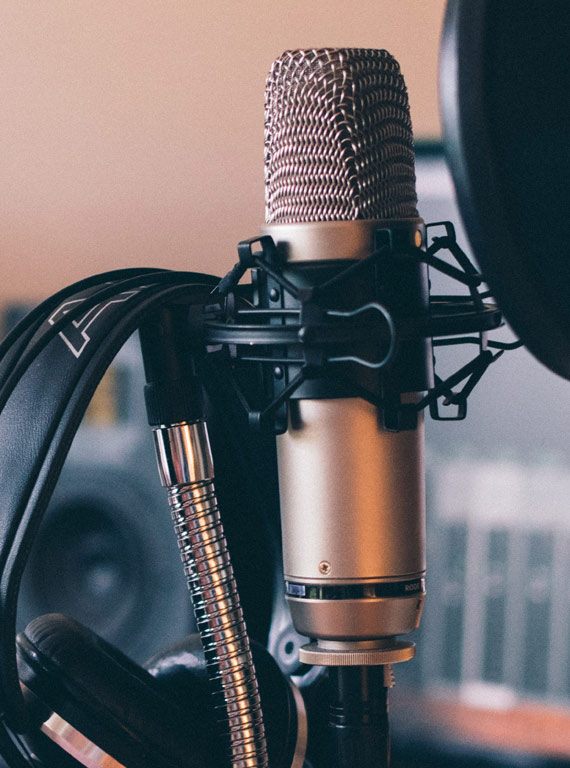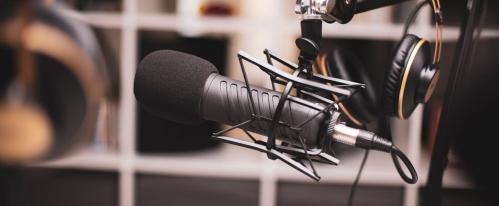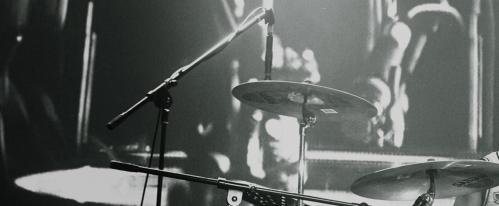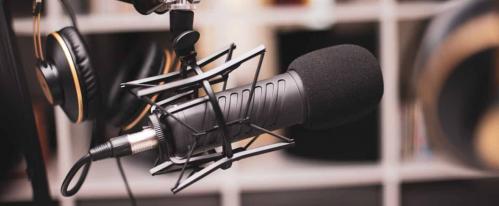WHAT DOES MICROPHONE SENSITIVITY MEAN? WE EXPLAIN MIC SENSITIVITY SO YOU CAN GET THE BEST RECORDING POSSIBLE.
If you've just bought a microphone, or you're about to start using one, you're probably wondering "what does microphone sensitivity mean?".
This is a very important question as you need to be aware of mic sensitivity so you don't destroy your microphone, or under-record.
So, what does microphone sensitivity mean?
In summary a microphone sensitivity specification lets you know how much electrical output (in thousandths of a volt or \"millivolts\") a microphone produces for a certain sound pressure input (in dB SPL).
In simple terms microphone sensitivity is the loudness of the sound signal that the microphone can record without having to add gain.
Say for example you have two different microphones and play the same sound source to them, with the same sound pressure level. If one microphone puts out a stronger signal (higher voltage), that microphone is said to have higher sensitivity.
You might record a guitar and have to turn up the gain with a mic with lower sensitivity, or drop teh gain down if the sensitivity is high.
It's worth keeping in mind that a microphone with a higher sensitivity rating does not necessarily make a microphone better than another microphone with a lower sensitivity rating. You need to take into account self noise, distortion etc.
WHAT IS "DB SPL"? What does SPL mean on microphones?
All microphones will have a dB SPL measurement on them.
The term \"dB SPL \" is a measurement of Sound Pressure Level (SPL) which is the force that acoustical sound waves apply to air particles.
In simple terms dB SPL measurement is the amount of sound pressure the mic can safely take without distorting, or in worst case scenario, damage the microphone.
As a person talks or sings, SPL is strongest near the mouth and weakens as the acoustical waves move away from the person. The same goes for guitar amps, jet planes or dogs alarms going off - basically any sound source!
As reference levels, 0 dB SPL is the quietest sound a human can normally hear and 1 dB is the smallest change in level that the human ear can detect.
As an example, at three feet, speech conversation level is about 60 dB SPL and a jackhammer's level is about 120 dB SPL.
If you had a microphone with a max dB SPL of 120, but you recorded a guitar amp at 140dB - you'd damage the microphone.
WHAT ABOUT DB SPL INPUT LEVELS?
Microphone manufacturers normally specify one of two dB SPL input levels: 74 dB SPL or 94 dB SPL. Shure uses 74 dB SPL unless indicated otherwise on the datasheet.
How do these dB SPL values relate to the real world?
Well, 74 dB SPL is typical of the sound intensity twelve inches away from a talker. 94 dB SPL is typical of the sound intensity one inch away from the same talker. A microphone \"hears\" these sound intensities and converts the acoustic wave into an equivalent electrical signal.
To determine which SPL is used for a sensitivity measurement, look at the microphone data sheet. Confusion can arise because of the different units by which SPL may be specified. For example, 94 dB SPL = 1 Pascal = 10 microbars = 10 dynes/cm2. And 74 dB SPL = 0.1 Pascal = 1 microbar = 1 dyne/cm2.
Unfortunately for the microphone buyer, different manufacturers use different units to specify SPL. But by following these dB SPL unit conversions, you can determine how different dB SPL ratings relate to each other.
Some microphones, such as the SE Electronics X1S have adjustable input levels
WHAT DOES "OPEN CIRCUIT VOLTAGE RATING" MEAN?
The term, "open circuit" essentially means the microphone is not connected to anything. That is, there is no electrical load on the microphone. The open circuit voltage rating indicates how much voltage appears at the microphone output when a certain SPL is introduced to the microphone diaphragm.
A value for a typical dynamic mic is -75 dBV/microbar. The "V" in dBV indicates the microphone output level is referenced to 1 Volt. If there was a microphone with an output voltage of 1 volt, its level would be given as 0 dBV.
The negative dBV output level ("-75") indicates that the mic output voltage is less than 1 volt (-75 dBV converts to .00018 volts). The "microbar" part indicates the microphone was tested with an input of 74 dB SPL. (Please reread the preceding section if the conversion from 1 microbar to 74 dB SPL is confusing.)
To compare this typical dynamic microphone's sensitivity with a different microphone that was tested at 94 dB SPL or 1 Pascal, simply add 20 dB to the rating: -75 + 20 = -55 dBV Pascal. Remember, to compare specifications from different manufacturers, make certain that each has been converted to the same input dB SPL level.
WHAT IS A MICROPHONE POWER RATING?
To get a power rating, a microphone is attached to a load equal to its own internal resistance. The microphone is subjected to 94 dB SPL and the resulting power output across the load is measured. Power ratings have virtually no relevance to today's audio circuits and are now rarely used.







